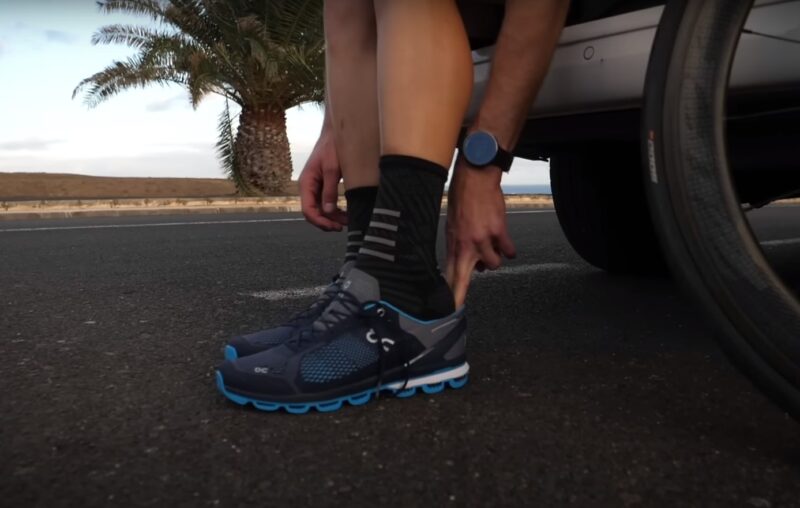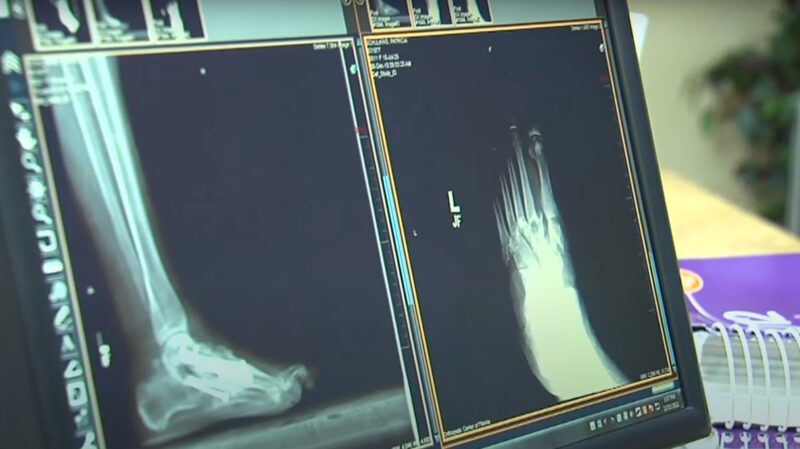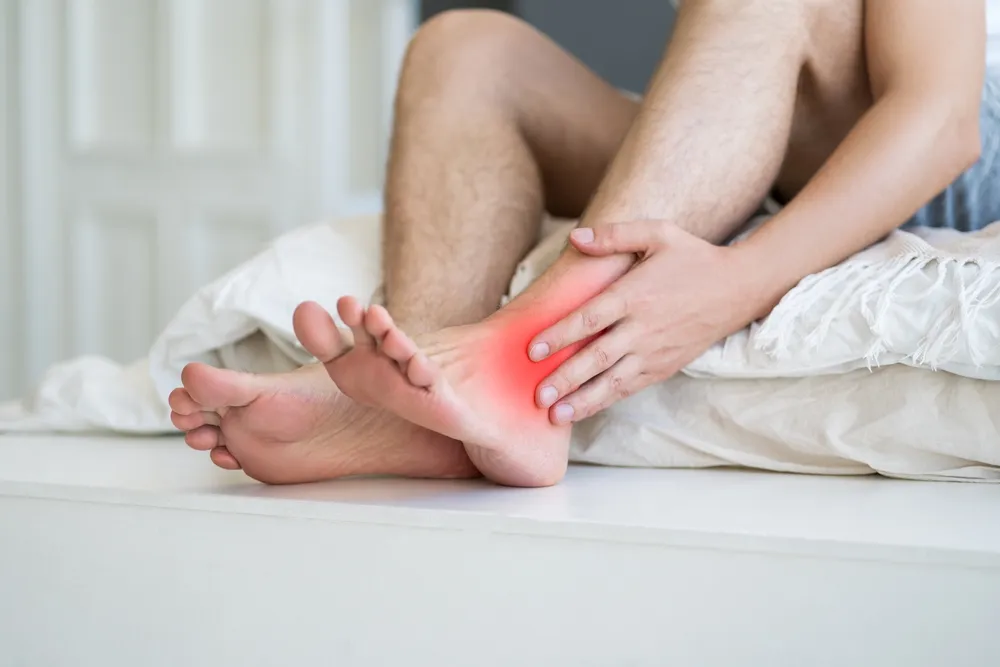Tendons, the sturdy bands connecting muscles to bones, are vital for movement. But what happens when they hurt? Often, we hear terms like “tendonitis” and “tendonosis” thrown around, but they’re not the same.
This article breaks down the differences between tendonosis and tendonitis, giving you clear insights into what each means, how they affect your body, and what you can do about it.
Brief Overview
| Aspect | Tendonitis | Tendonosis |
|---|---|---|
| Cause | Inflammation | Degeneration |
| Onset | Sudden or Acute | Gradual or Chronic |
| Main Symptom | Pain and Swelling | Persistent Pain |
| Treatment | Rest, Ice, Medication | Rest, Therapy, Surgery |
What is Tendonitis?

Tendonitis is the inflammation of a tendon, typically resulting from repetitive motion or a sudden, severe injury. This condition is essentially your body’s immediate reaction to injury or overuse, involving the body’s immune response to heal the damaged tendon. Inflammation here is a defense mechanism that signifies your body is trying to repair itself.
Causes and Symptoms of Tendonitis
| Causes of Tendonitis | Symptoms of Tendonitis |
|---|---|
| Overuse: Common in athletes or workers performing repetitive tasks. | Pain: Often described as a dull ache, particularly when moving the affected limb or joint. |
| Sudden Injury: Can occur during sports or accidents. | Tenderness: The area around the tendon may be tender to touch. |
| Aging: Tendons lose elasticity and are more prone to injury as we age. | Mild Swelling: This can occur around the joint, and sometimes redness is observed. |
| Certain Diseases: Conditions like rheumatoid arthritis can predispose individuals to tendonitis. | Stiffness: The joint may feel stiff, especially in the morning. |
What About Treatment?
1. Rest

To prevent further damage to the tendon, it’s essential to avoid activities that aggravate the condition. Resting the affected area is critical as it reduces stress on the tendon, aiding in the healing process. Adequate rest is a key factor in the recovery from tendonitis.
2. Ice
Applying cold packs for 20 minutes can significantly reduce swelling and alleviate pain. Ice therapy is most effective when implemented soon after the injury occurs. For optimal results, it’s beneficial to repeat this process several times throughout the day.
3. Medication

Pain and swelling associated with tendonitis can be reduced with over-the-counter anti-inflammatory drugs like ibuprofen. In more severe cases, a doctor may prescribe stronger medications. It’s important to follow the prescribed usage and be mindful of any potential side effects.
4. Physical Therapy
Engaging in strengthening exercises can help rebuild the strength of the tendon and prevent future injuries. Stretching exercises are also important as they increase flexibility and reduce tension in the affected tendon.
A physical therapist can customize these exercises to suit the specific needs of your condition.
What is Tendonosis?

Tendonosis is a chronic condition characterized by the degeneration of tendon fibers due to long-term overuse. This condition differs significantly from tendonitis, as it involves no inflammation.
Instead, tendonosis is marked by gradual changes in the tendon’s structure, leading to weakened and degenerated tissue.
Causes and Symptoms
| Causes | Symptoms |
|---|---|
| Prolonged overuse, typically seen in athletes or individuals with repetitive strain jobs. | Persistent pain that worsens with activity and improves with rest. |
| Aging, which naturally decreases the tendon’s elasticity and resilience. | Stiffness, especially noticeable in the morning or after periods of inactivity. |
| Inadequate rest following tendon injuries, exacerbating the strain and degeneration. | Loss of strength in the affected area, making daily activities difficult. |
Treatment for Tendonosis
1. Rest
Rest is a critical component in treating tendonosis. It allows the affected tendon to heal by avoiding further degeneration. This often means staying clear of activities that could exacerbate the condition.
In some cases, the use of braces or splints is recommended to immobilize the tendon, providing the necessary support and rest for healing.
2. Physical Therapy

Physical therapy plays a pivotal role in the recovery from tendonosis. It typically involves engaging in slow, controlled exercises designed to build up tendon strength gradually. Therapists may also employ methods like massage and ultrasound to promote healing.
The ultimate goal of physical therapy is to enhance the flexibility and range of motion of the joint associated with the affected tendon.
3. Eccentric Strengthening
Eccentric strengthening exercises are a specialized aspect of treatment for tendonosis. These exercises focus on elongating the tendon during contraction, which is essential for remodeling and strengthening the tendon tissue.
Eccentric strengthening is often a key part of a long-term rehabilitation strategy aimed at preventing the recurrence of tendonosis.
4. Surgery

Surgery is reserved for severe cases of tendonosis, particularly when more conservative treatments have not yielded the desired results. The procedure typically involves removing the degenerated parts of the tendon and repairing it.
Following surgery, a thorough rehabilitation program is essential to regain function and strength in the tendon and associated joint.
Why the Distinction Matters
Understanding whether you have tendonitis or tendonosis is crucial for the right treatment. Treating tendonosis like a short-term inflammation (as in tendonitis) might not just be ineffective but could worsen the condition.
Prevention Tips
1. Regular Exercise

Engaging in regular exercise routines, such as simple stretching or low-impact activities like swimming, can help maintain tendon health by promoting blood flow and tissue repair. It also contributes to the overall strength and flexibility of tendons, reducing the risk of both tendonitis and tendonosis.
2. Proper Technique
Ensuring that you use correct techniques during sports activities or repetitive tasks is essential. Incorrect form or repetitive stress on tendons can lead to microtears and inflammation, which are common in tendonitis.
By following proper techniques, you can minimize the strain on your tendons and reduce the chances of developing tendon-related issues.
3. Ergonomic Workspace

Creating an ergonomic workspace, whether at home or in the office, is crucial for reducing strain on your tendons. Simple adjustments such as maintaining proper posture, using an ergonomic chair and keyboard, and taking frequent breaks can go a long way in preventing tendon-related problems.
These measures help distribute stress evenly across your muscles and tendons, reducing the risk of developing conditions like tendonosis.
4. Rest
Adequate rest is vital for tendon health. Allowing your tendons to recover between activities or after intense workouts is essential in preventing overuse injuries like tendonitis. Ensure that you include rest days in your exercise routine and prioritize getting enough sleep to support tissue repair and reduce the risk of tendon-related issues in the long run.
FAQs
Can diet affect the recovery process from tendonitis or tendonosis?
Yes, diet can play a role in the recovery. A diet rich in anti-inflammatory foods, such as omega-3 fatty acids found in fish, can help manage the inflammation in tendonitis. For tendonosis, foods rich in collagen and vitamin C, like citrus fruits and leafy greens, can support tendon repair and regeneration.
Are there any specific stretches or exercises that are particularly beneficial for preventing tendonitis?
Yes, stretches that improve flexibility, particularly in the muscles connected to the affected tendon, can help prevent tendonitis. For example, if you’re at risk of Achilles tendonitis, calf stretches can be beneficial.
Similarly, wrist flexor and extensor stretches can help prevent wrist tendonitis. It’s important to do these stretches regularly and gently.
Can alternative therapies like acupuncture or chiropractic care be effective for treating tendonosis or tendonitis?
Alternative therapies such as acupuncture and chiropractic care can be complementary treatments for some individuals. Acupuncture may help in reducing pain and inflammation for tendonitis.
Chiropractic adjustments might aid in improving joint alignment and function, which can indirectly benefit tendon health.
However, it’s essential to consult with a healthcare professional before starting these treatments.
Is it possible to have both tendonitis and tendonosis at the same time in the same tendon?
Yes, it’s possible. This might happen when a chronic condition like tendonosis leads to acute inflammation, resulting in tendonitis. In such cases, the treatment approach might need to address both inflammation and degeneration.
How long does it typically take to recover from tendonitis compared to tendonosis?
The recovery time can vary significantly. Tendonitis, being an acute condition, often resolves in a few days to weeks with proper rest and treatment. Tendonosis, on the other hand, is a chronic condition and may take several months to improve significantly, depending on the severity and the effectiveness of the treatment regimen.
Can both tendonitis and tendonosis lead to permanent damage if left untreated?
Yes, if left untreated, both conditions can lead to permanent damage. Chronic tendonitis can weaken a tendon, making it more susceptible to tears. Tendonosis, being a degenerative condition, can lead to the permanent weakening and thinning of the tendon, increasing the risk of tendon rupture.
Therefore, early and appropriate treatment is crucial.
The Bottom Line
To sum up, tendonitis and tendonosis are the two conditions that affect tendons but have distinct characteristics and require different approaches to treatment and management.
Tendonitis is identified as an acute condition characterized by inflammation of a tendon, usually due to overuse or injury, leading to symptoms such as pain, swelling, and tenderness. Its treatment focuses on rest, ice application, medication, and physical therapy.
In contrast, tendonosis is a chronic condition marked by tendon degeneration without inflammation. It results from prolonged overuse and presents with symptoms like persistent pain, stiffness, and loss of strength. Treatment for tendonosis includes rest, physical therapy, eccentric strengthening exercises, and in severe cases, surgery.
